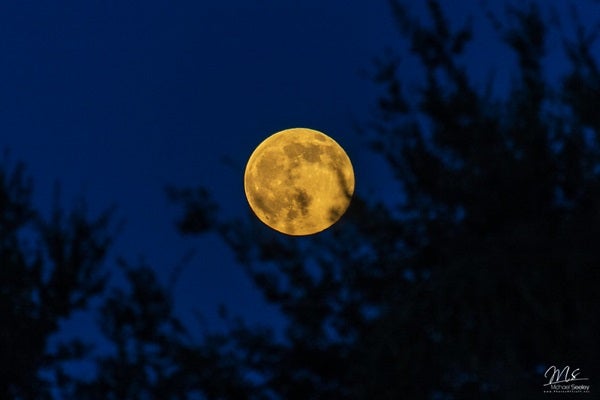
The Green Bank Telescope in West Virginia is located in the heart of the National Radio Quiet Zone, an area where radio transmissions – including Wi-Fi and cell phones – are severely restricted. Credit: NSF/AUI/NSF GBO/J. Seymour
Researchers using the Low Frequency Array (LOFAR) radio telescope in Europe have found that the second generation of Starlink satellites emit higher levels of radio waves that could pose a serious risk to radio astronomy.
This radio wave emission problem is in addition to reflected sunlight from Starlink and other satellites, which can be visible to the naked eye and leave bright streaks on optical images.
In observations made over the summer, Starlink’s V2-mini – an updated model of its internet-providing satellites – emitted up to 32 times more unintentional electromagnetic radiation (UEMR) than its predecessor. The LOFAR radio telescope, consisting of several antennas across Europe and operated by the Netherlands Institute for Radio Astronomy (ASTRON), tracked the satellites on July 19 over the course of two one-hour sessions. The results, published in the journal Astronomy and astrophysicson September 18, found that the objects emitted more powerful radio waves than the previous generation. The problem is compounded by the fact that the V2-mini satellites operate in a lower orbit than previous Starlink satellites.
According to LOFAR lead researcher Cees Bassa in an ASTRON press release, these satellites are about 10 million times brighter in radio waves than any faint object LOFAR could locate. “This difference is similar to that of the faintest stars visible to the naked eye and the brightness of the full Moon. As SpaceX launches approximately 40 second-generation Starlink satellites each week, this problem is becoming increasingly severe.”
SpaceX began launching the V2-mini generation of satellites early last year as part of the company’s Starlink constellation, which offers high-speed Internet access around the world. The satellites incorporate new measures to reduce their reflectivity, helping to mitigate their impact on optical astronomy and naked-eye observations. In a 2023 release, the company highlighted its work with astronomers, saying it has “prioritized collaboration with astronomers and scientists to mitigate the impact of the Starlink satellite series on their observations.” However, the new results show that there is still much work to be done to reduce their impact on radio astronomy.
SpaceX did not respond to requests for comment.
SpaceX has also worked with the National Science Foundation and the US National Radio Astronomy Observatory (NRAO) to reduce their impact on the field, having signed a coordination agreement in 2019. In experiments conducted since 2021 at the Very Large Array in New Mexico , SpaceX and the NRAO have been working on methods to coordinate operations so that Starlink satellites can move their transmission beams away from operating radio telescopes. However, the radio emission detected in this new study concerns electromagnetic radiation that unintentionally escapes from satellites.
The LOFAR study said there are ways to prevent these satellites from interfering with radio telescopes. These actions include raising awareness, promoting radio frequency quiet zones and stricter industry regulations.
The study states that with this new information, there is hope that SpaceX and Starlink will work to mitigate the UEMR and its impact on astronomy in the future.

